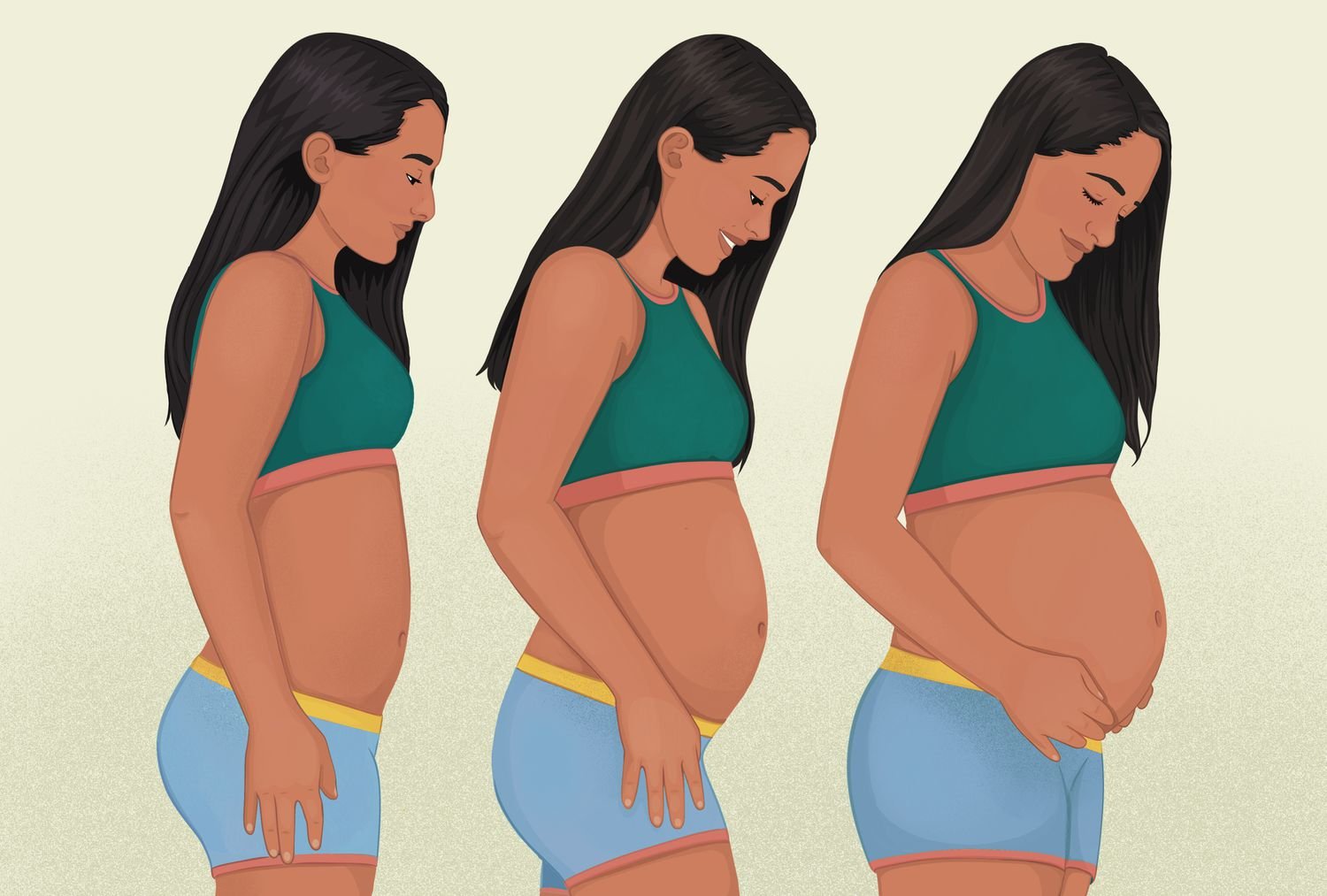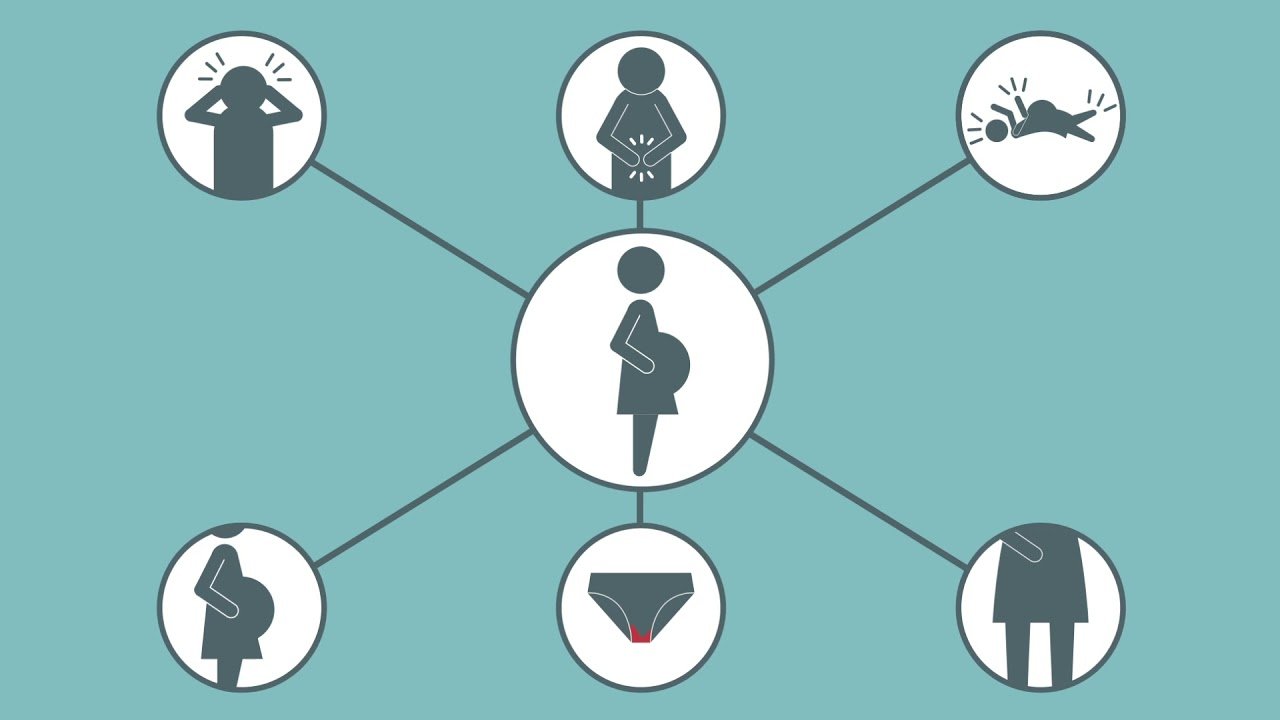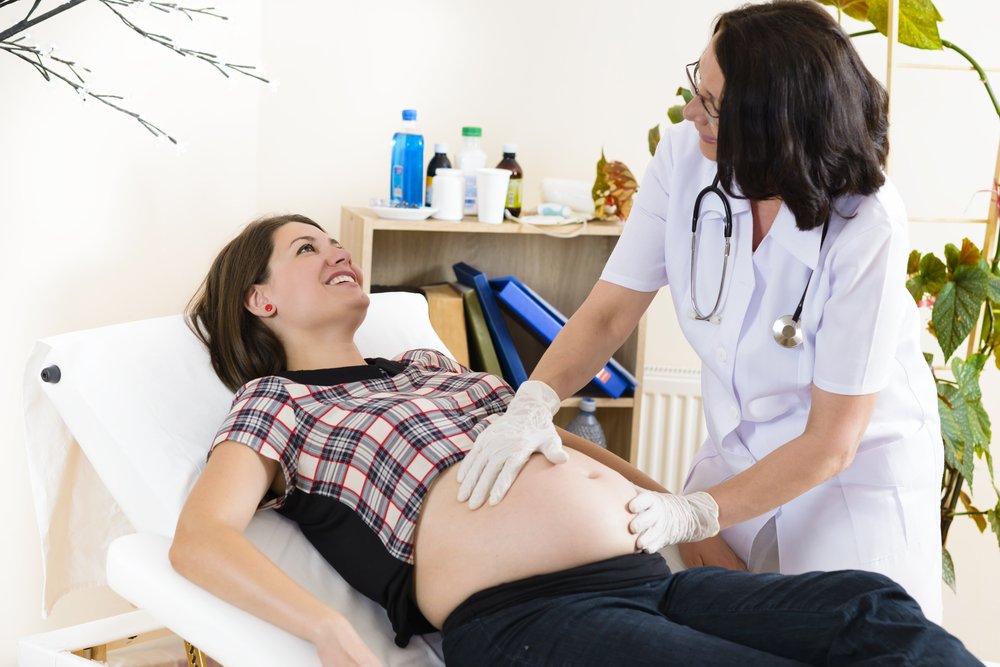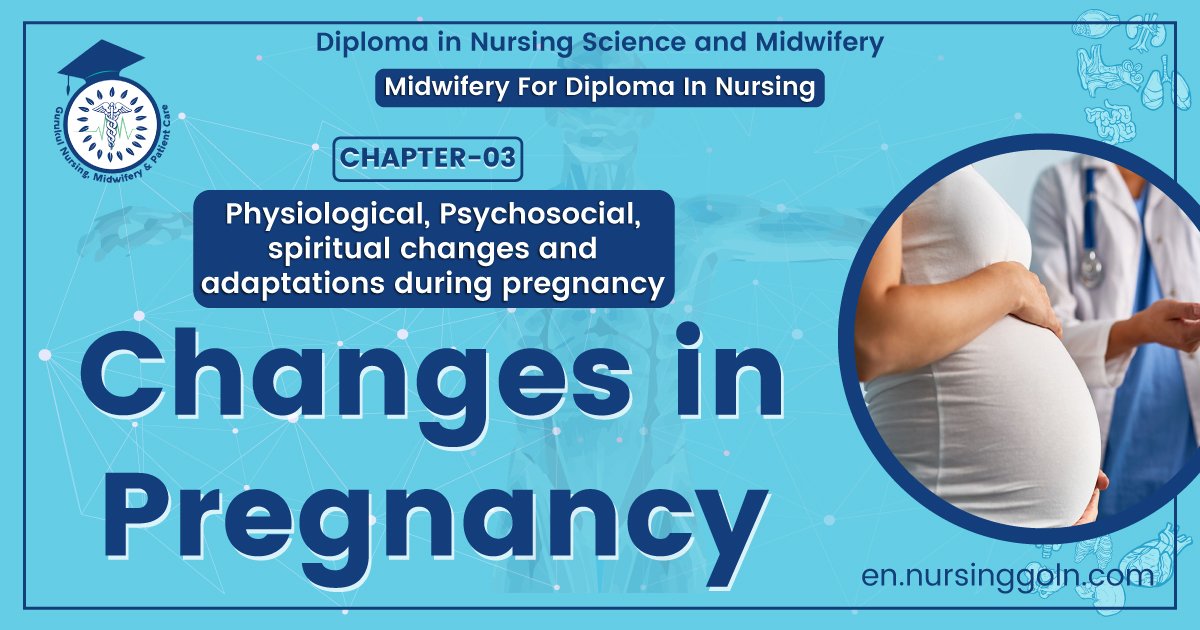Changes during Pregnancy – This course is designed to understand the care of pregnant women and newborn: antenatal, intra-natal and postnatal; breast feeding, family planning, newborn care and ethical issues, The aim of the course is to acquire knowledge and develop competencies regarding midwifery, complicated labour and newborn care including family planning.
Changes during Pregnancy
Definition of pregnancy/gestation
Pregnancy, also known as gestation, is the time during which one or more offspring develops inside a woman. A multiple pregnancy involves more than one offspring, such as with twins. Pregnancy can occur by sexual intercourse or assisted reproductive technology.
[Ref: D. C. Dutta’s Obs/9th edition)
or
The state of carrying a developing embryo or fetus within the female body. This condition can be indicated by positive results on an over-the-counter urine test, and confirmed through a blood test, ultrasound, detection of fetal heartbeat, or an X-ray. Pregnancy lasts for about nine months, measured from the date of the woman’s last menstrual period (LMP).
[Ref-www.medicinenet.com]

Physiological changes occur during pregnancy:
1. Respiratory system changes:
➤ Increased respiratory rate
➤ increased minute ventilation
➤ Respiratory alkalosis
➤ Decreased functional capacity
➤ Increased volume
➤ Pregnant women may feel out of breath
2. Cardiovascular system changes:
➤ Increased cardiac volume
➤ Increased blood output
➤ Elevated resting heart rate
➤ Decreased peripheral resistance
➤ Decreased blood pressure (second trimester)
3. Gastrointestinal system changes:
➤ Decreased gastric motility
➤ Increased reflex
➤ Constipation
➤ Heartburn
➤ progesterone causes relaxation of the lower esophageal sphincter
4. Changes of the breast:
➤ Breast may become larger and more tender
➤ Nipple may stick out more
➤ By the third trimester, colostrum, a yellow watery pre-milk may leak from the nipples
5. Endocrine system changes:
➤ Insulin resistance increase with advancing pregnancy mainly due to insulin antagonism by human placental lactogen.
➤ The posterior pituitary gland is stimulated into produce increasing amount of oxytocin.
➤ Increased plasma binding protein.
➤ Increased bound form thyroxine.
➤ Decreased free toxin levels.
6. Abdomen changes:
➤ During second trimester the abdomen begins to expand and by the end of this trimester, the top of the uterus will be near the rib case.
➤ Abdominal wall and ligament that support the uterus are stretched.
7. Urinary system changes:
➤ Frequent urination
➤ Leakage of urine when coughing or sneezing laughing
➤ The kidney must work extra hard to excrete waste product from both mother and fetus.
8. Musculoskeletal system changes:
➤ Back pain
➤ Pubic symphysis dysfunction
9. Skin Changes.
➤ Stretch mark
➤ Hyperpigmentation of the umbilicus, nipples, abdominal midline and face
➤ Spider veins and reddening of the palms.
10 . Haematological changes occur during pregnancy:
a. Blood volume:
➤ Blood volume is markedly raised during pregnancy which starts to increase from 6th weeks.
➤ Vascularity of the uterus also increased.
b. RBC &haemoglobin:
➤ RBC volume is increased to 20-30%. Total increase in volume is 350 ml.
➤ Reticulocyte count increases 20%.
➤ Erythropoietin level is increased.
c. White blood cells:
➤ Neutrophilic leukocytosis: 10000-15000/mm3 & even up to 20000 during labour.
d. Plasma volume:
➤ Total plasma volume increases to the extent of 1.25 litre & greater in multiple pregnancy, multigravida & in large baby.
e. Total protein:
➤Total plasma protein increases from the normal 180 gm (non-pregnant) to 230 gm at term.
f. Blood coagulation factor
➤ Increases fibrinogen level
g. High ESR.
11. Other changes:
➤ Changes in hair and nail texture
➤ Leg cramp
[Ref: D. C. Dutta’s Obs/9/42-59+www.healthline.com]
Psychological changes occur during pregnancy:
1) First trimester;
➤ Extreme fatigue or morning sickness
➤ Many women feel moody (as with premenstrual syndrome).
➤ It’s common to feel happy or anxious about a new pregnancy,
➤ Feel upset if pregnancy wasn’t planned.
2) Second trimester.
➤ Fatigue
➤ morning sickness, and moodiness
➤ Feel more forgetful and disorganized than before
➤ Feel lots s of emotions about things like the way look or feeling the baby move
3) Third trimester.
➤ WStill feel forgetful
➤ When due date nears, it is common to feel more anxious about the childbirth.
➤ Worry about how a new baby will change the life
➤ As feel more tired and uncomfortable
➤ More initable than before,
4. Other:
➤ Serious anxiety
➤ depression
➤ trouble sleeping

Postdate and post term pregnancy:
Post date:
A pregnancy exceeding 294 days or 42 completed weeks.
or
Pregnancy that extends beyond 42 wk of gestation. An average of 10% of normal pregnancies are so classified.
Post term pregnancy:
Post term pregnancy is defined as a pregnancy that extends to 42 0/7 weeks and beyond. The reported frequency of post term pregnancy is approximately 3-12%
or
Post-term pregnancy is defined as a pregnancy that lasts longer than 42 weeks; two weeks past the normal 40-week gestation period.
Causes of post term pregnancy
Post-term Pregnancy Causes
In many cases, post-term pregnancy is a matter of miscalculating conception date. Yet physicians should always perform an ultrasound during the first half of the pregnancy to ensure the highest accuracy. Although there is no 100% guarantee of an infant’s due date, an early ultrasound will give a better idea of the estimated due date. Other factor that may contribute to post-term pregnancy include:
➤ Previous post-term pregnancies
➤ Maternal obesity
➤ Sulfatase deficiency in the placenta
➤ Central nervous system abnormalities
➤ Anencephaly
Post-term Pregnancy Risks:
According to the American Academy of Family Physicians (AAFP), there are numerous dangerous health risks associated with post-term pregnancy, including
Fetal Macrosomia
Fetal macrosomia is defined as an infant who is over 8 pounds, 13 ounces when born. This may cause childhood diabetes, obesity, and metabolic syndrome. Mothers are also as risk when delivering a large baby, including the uterine ruptures, genital tract lacerations, and excessive bleeding after delivery.
Placental Insufficiency
Placental insufficiency, also known as uteroplacental vascular insufficiency, occurs when the placenta fails to deliver adequate oxygen and nutrients to the infant. After 37 weeks of pregnancy, the placenta reaches its maximum size and its functions begin to reduce afterwards.
The longer an infant goes without proper nutrition and oxygen, the more at risk, they become for a host of health problems, including oxygen deprivation that can lead to cerebral palsy and learning disorders. Since the placental cord may compress in post-term pregnancies, there is heightened risk of placental insufficiency,
Meconium Aspiration
Meconium aspiration is marked by an infant breathing in amniotic fluid and meconium (newborn feces) shortly after birth. Infants who are born post-term are more likely to have a bowel movement while still in utero. Meconium aspiration is considered extremely dangerous and can lead to oxygen deprivation, lung inflammation, and lung infection.
Although rare, it can also lead to persistent pulmonary hypertension of the newborn (PPHN) and permanent brain damage. Mothers are also at risk for developing dangerous medical issues, including postpartum hemorrhaging, bacterial infections, perineum injuries, and increased chance of a cesarean section (C-Section) surgery.

Post-term Pregnancy Treatment:
Treatment is imperative for post-term pregnancy and if done properly, may help prevent many of the aforementioned risks. Typical treatment options may include:
1. Antenatal Fetal Monitoring: An infant may be monitored closely once the due date has passed in order to detect any signs of distress. AAFP doesn’t recommend antenatal fetal monitoring until the 42nd week pregnancy.
2. Contraction Stress Test: A contraction stress test will provide Oxycontin to the mother in an attempt to start contractions. The medicine is usually administered intravenously.
3. Biophysical Profile: A biophysical profile (BPP) is a test that will determine an infant’s overall physical score in regards to movement, breathing, fetal tone, and the volume of amniotic fluid.
4. Labor Induction: It’s often difficult to determine the best time to induce labor, but if the results of the previously mentioned treatment options indicate fetal distress, physicians will normally induce labor. Labor induction can include a scheduled C-section or medication applied to the cervix that promotes contractions.
[Ref by-Jeffcoate/7th & lecture]
Most common signs and symptoms of pregnancy:
The most common early signs and symptoms of pregnancy might include:
> Missed period.
> Tender, swollen breasts.
> Nausea with or without vomiting: Morning sickness, which can strike at any time of the day or night, often begins one month after become pregnant. However, some women feel nausea earlier and some never experience it
> Increased urination: The amount of blood in body increases during pregnancy, causing kidneys to process extra fluid that ends up in bladder.
> Fatigue
Other pregnancy signs and symptoms
Other less obvious signs and symptoms of pregnancy that might experience during the first trimester include:
➤ Moodiness.
➤ Bloating.
➤ Light spotting.
➤ Cramping.
➤ Constipation.
➤ Food aversions.
➤ Nasal congestion
or
Ways to confirm pregnancy:
1. Missed periods
2. Spotting
3. Nausea and vomiting
4. Bloating
5. Sore breasts and tingly nipples
6. Frequent urination
7. Back pain
8. Headaches
9. Irritability or mood swings
10. Food aversions/cravings
11. Fatigue and sleeplessness
12. Bleeding gums
13. Palmar Erythema
14. Nasal congestion
15. High basal body temperature
16. Low sexual desire
17. Pigmentation
18. Dark line of hair on the body
19. Acne
20. Itching sensation on the skin
21. Spider veins
22. Dry skin
23. Enlargement of uterus
Signs/symptoms of early pregnancy:
1. Food aversions
2. Mood swings
3. Abdominal bloating
4. Frequent urination
5. Fatigue
6. Sore breasts
7. Light bleeding or spotting
8. Nausea
9. A missed period
10. High basal body temperature
11. Positive home pregnancy test
[Ref by-Jeffcoate/7th & lecture]
Dangerous signs in pregnancy:
Danger signs during pregnancy includes:
➤ Vaginal bleeding
➤ Convulsions/fits
➤ Severe headaches with blurred vision
➤ Fever and too weak to get out of bed
➤ Severe abdominal pain
➤ Fast or difficult breathing.
If she has any of these signs she should go to the health Centre as soon as possible:
➤ Fever
➤ Abdominal pain
➤ Feels ill
➤ Swelling of fingers, face and legs

Effects of smoking during pregnancy:
- Smoking reduces a woman’s chances of getting pregnant.
- Smoking during pregnancy increases the risk for pregnancy complications
- Tobacco smoke harms babies before and after they are born.
- Women who smoke have more difficulty becoming pregnant and have a higher risk of never becoming pregnant.
- Smoking during pregnancy can cause tissue damage in the unborn baby, particularly in the lung and brain, and some studies suggests a link between maternal smoking and cleft lip.
- Studies also suggest a relationship between tobacco and miscarriage. Carbon monoxide in tobacco smoke can keep the developing baby from getting enough oxygen. Tobacco smoke also contains other chemicals that can harm unborn babies.
Risk factors of pregnancy:
A. Age factors:
- Early pregnancy
- First-time pregnancy after age 35.
B. Existing health condition:
- High blood pressure
- Polycystic ovary syndrome (PCOS)
- Diabetes.
- Kidney disease.
- Autoimmune disease
- Thyroid disease
- Obesity.
- HIV/AIDS
C. Lifestyle Factors:
- Alcohol abuse
- Tobacco abuse.
- Drug abuse.
- D. Conditions of pregnancy:
- Multiple gestation
- Gestational diabetes
- Preeclampsia and eclampsia.
- Previous preterm birth.
- Birth defects or genetic conditions in the fetus
Confirmation test for pregnancy/ types of pregnancy test:
1. Urine test: A urine test can be done at the doctor’s clinic or at home. Home urine test for pregnancy is convenient and about 97% accurate.
2. Blood test: Though blood tests are more accurate and can detect pregnancy earlier than urine tests they are used less often. There are following types of blood pregnancy tests:
i. Qualitative hCG test: It simply detects the presence or absence of hCG as early as 10 days after a missed period to confirm whether women are pregnant or not. It may not detect pregnancy until three or four days after implantation.
ii. Quantitative hCG test: It measures the amount or concentration of hCG, even very low levels, in the blood. Problems like ectopic pregnancy may be detected with this test.
iii. Detecting early pregnancy factor (EPF): Within 48 hours of fertilization, a protein called early pregnancy factor (EPF) is produced. Detecting this protein in the blood is the earliest but expensive and time-consuming way to determine pregnancy.
3. Ultrasonography: Ultrasonography may be used to visualize the fetus in the womb at around four and a half weeks after last menstrual period (LMP). It can tell how many weeks women are into pregnancy and how healthy the baby is.
[Ref by-Jeffcoate/7th edition,]
Or (Another answer)
There are several way to confirm pregnancy. These are –
1. Biochemical Pregnancy tests to assess presence of human chorionic gonadotrophin (hcG).This hormone is produced by the trophoblast and begins to be produced on the day of implantation hcG can be detected in the blood 6 days after conception, and in urine 26 days after conception.
2. The gestational sac can be seen with a transvaginal Ultrasound at 4-5weeks; and by trans abdominal Ultrasound a week later.
3. The Fetus can be palpated and fetal movements felt form about 22 weeks.
4. Urine test at home with a home pregnancy tests (HPTs). HPTs are highly accurate if used correctly and at the right time. The user hold a stick in the urine stream.Collecting urine in a cup at the morning and then dipping the stick into it and wait a few minutes then inspect the result.
Clinical significant of physical assessment in pregnancy:
4. To maintain healthy body weight.
5. Correction of BMI <18 or >30 kg/m²
6. Determine gestational age.
7. Detect multiple pregnancies.
8. Identify or confirm following disease:
a. Cardiac disease, including hypertension.
b. Renal disease,
c. Diabetes treated with insulin, or any other endocrinological disorder.
d. Significant respiratory impairment, including severe asthma.
e. Chronic viral infections-eg, HIV, hepatitis B virus (HBV), hepatitis C virus (HCV).
f. Autoimmune disorders.
9. To identify problems associated with previous pregnancies:
a. Recurrent miscarriage (>3 consecutive pregnancy losses or a mid-trimester loss).
b. Preterm birth.
C. Severe pre-eclampsia, HELLP syndrome (Haemolysis, EL (elevated liver) enzymes, LP (low platelet) count), or eclampsia.
d. Previous antepartum haemorrhage or postpartum haemorrhage on two occasions.
e. Grand multiparity (>6 children).
[Ref by-Jeffcoate/7th & lecture]

Physical examination for pregnant women:
a) Height and weight
b) Blood pressure
c) Urinalysis
d) Blood test:
➤ Hemoglobin
➤ Blood grouping and Rh
➤ VDRL
➤ HBs Ag
Midwife’s examination:
a. General appearance
b. Breast examination
c. Vaginal discharge/bleeding
d. Abdominal examination
e. Edema
f. Varicosities
Common Discomforts during Pregnancy:
Symptoms of discomfort due to pregnancy vary from woman to woman. The following are some common discomforts.
1. Nausea and vomiting
2. Morning sickness
3. Fatigue
4. Hemorrhoids
5. Varicose veins.
6. Heartburn and indigestion
7. Bleeding gums.
8. Pica
9. Swelling or fluid retention.
10. Skin changes.
11. Stretch marks
12. Yeast infections
13. Congested or bloody nose
14. Constipation
15. Backache
16. Dizziness. Dizziness during pregnancy is a common symptom, which may be caused by:
✓ Low blood pressure due to the uterus compressing major arteries
✓ Low blood sugar
✓ Low iron
✓ Quickly moving from a sitting position to a standing position
✓ Dehydration
Complication of pregnancy:
➤ High blood pressure
➤ Gestational diabetes
➤ Preeclampsia
➤ Preterm labor
➤ Pregnancy loss
➤ Low Birth Weight
➤ Anaemia
➤ Obesity and weight gain
➤ Urinary tract infection (UTI)
➤ Group B Strep is the leading cause of infections in newborns
➤ Ectopic Pregnancy
➤ Low amniotic fluid (oligohydramnios)
➤ Miscarriage
➤ Placenta previa

Psychological response during each trimester of pregnancy
1. First trimester:
a. Uncertainty: Reaction to uncertainty depends on the individual. Women may spend a lot of time trying to confirm of pregnancy.
b. Ambivalence: Even through pregnancy was, confirmed women may still experience ambivalence of pregnancy.
c. The self as primary focus: Throughout the first trimester the women usually focus on herself not the fetus. Early physical changes, such as nausea and fatigue confirm that something is happening to her, but the fetus remains vague and unreal to them.
2. Second trimester:
Physical evidence of pregnancy
The movement of the fetus (quickening of the fetus) makes women experiences that real fetus. As a result, mothers no longer thinks of fetus as simply a part of her body, but they now perceive it as separate. Other changing during the second stage are the fetus as primary focus, narcissism and introversion body image and changes in sexuality.
3. Third trimester:
a. Mother experience vulnerability particularly during the 7th month of pregnancy. Some may experience nightmare about harm coming to their infant.
b. Increasing dependence.
c. Preparation for childbirth.
Read More….
